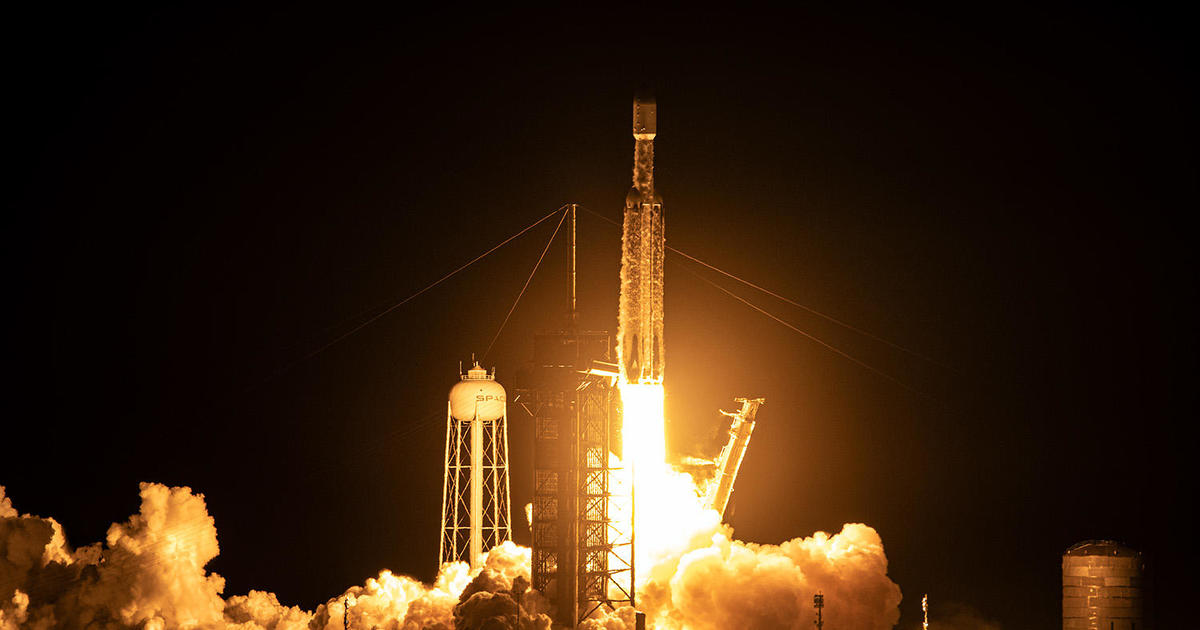Meta Description: SpaceX recently completed a spectacular double launch, sending a military spaceplane and 23 Starlink satellites into orbit. This article provides a detailed overview of the launches and the objectives behind them.
**”SpaceX’s Remarkable Double Launch: X-37B Military Spaceplane and 23 Starlinks”**
SpaceX, the leading space exploration company, recently achieved a remarkable feat by completing a spectacular double launch involving a military spaceplane and a batch of 23 Starlink satellites. The mission, which took place at the Kennedy Space Center and the Cape Canaveral Space Force Station, marked a significant milestone in the company’s history and the ongoing advancements in space technology.
**The Falcon Heavy’s Impressive Display**
The doubleheader commenced with the powerful SpaceX Falcon Heavy rocket’s uplifting display as it propelled an unmanned X-37B spaceplane into orbit for a confidential and extensive military assignment. The rocket’s 27 Merlin engines put on a breathtaking show as it ascended from the Kennedy Space Center, leaving a trail of flaming exhaust in its wake.
**Groundbreaking SpaceX Engineering**
In a swift turnaround, just two hours and 54 minutes after the Falcon Heavy’s launch, another team of skilled SpaceX engineers launched a single-core Falcon 9 rocket from the Cape Canaveral Space Force Station. This sequence marked a historic moment, with the shortest time between two U.S. missions into orbit since the mid-Earth era.
**Milestone Achievements and Landings**
The successful completion of the Falcon Heavy’s launch marked SpaceX’s 95th and 96th flights of the year, showcasing the company’s extraordinary capabilities and commitment to space exploration. Notably, the Falcon Heavy’s side boosters achieved flawless landings, signifying a significant milestone for SpaceX’s reusability endeavors.
**23 Starlink Satellites: Advancing Connectivity**
Following the Falcon Heavy’s mission, SpaceX engineers launched a single-core Falcon 9 rocket carrying 23 Starlink internet satellites. This deployment contributed to the continuous expansion of the Starlink network, enhancing global internet connectivity and accessibility.
**X-37B: Unveiling Unprecedented Capabilities**
The X-37B spaceplane, operated by the Pentagon’s Rapid Capabilities Office for the US Space Force, serves as a revolutionary platform for advanced sensors, avionics testing, and reusable spacecraft component evaluations. Utilizing extendable solar panels, the X-37B enables prolonged flights, underscoring its pivotal role in space exploration and experimentation.
**Innovative Spaceplane Design**
The Boeing-built X-37B boasts a design reminiscent of a miniature space shuttle, complete with delta wings, heat shield tiles, and a compact cargo hold. Its remarkable capabilities and versatility make it a crucial asset for various space missions, including extended-duration operations and experimental research.
**Pioneering Space Missions**
The X-37B’s previous flights have collectively amassed over 10.3 years in space, underscoring its unparalleled endurance and operational longevity. As the final mission unfolds, its undisclosed duration paves the way for exciting revelations and groundbreaking accomplishments in space exploration.
SpaceX’s recent double launch exemplifies the company’s unwavering commitment to advancing space exploration, expanding connectivity through Starlink satellites, and pioneering cutting-edge technologies. These transformative endeavors continue to redefine the possibilities of space travel and exploration, setting the stage for a new era of human achievement beyond Earth’s boundaries.


